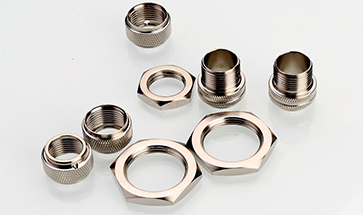In the metal processing industry, whether it is the production of screws and rivets or automobile bodies, a large amount of chip fluid and stamping oil need to be used. Under this background, the application and demand of industrial oil cleaning agents are increasing, but do you know what links metal degreasing agents are mainly used in metal workpiece cleaning? And what are the common cleaning processes? Xiaobian will introduce it to you.
(1) Oil film cleaning
The metal workpiece needs to be surface treated before the production and assembly of the parts. Due to the aging of the machine tool equipment, the surface of the metal workpiece will produce oil and leave an oil film, which is mostly mineral oil. The mineral oil adhered to the surface of the workpiece for a long time will reduce the binding force between the surface coating and the base metal, which has a great impact on the metal coating, even a small amount of oil will lead to the coating is not firmly combined, and the phenomenon of peeling, bubbles, etc., needs timely treatment.
(2) lubricating oil residue cleaning
In the process of metal workpiece forming, stamping and die casting, in order to reduce the friction between the various parts, reduce the resistance and extend the service life of the mold, the use of lubricating oil is indispensable. However, after the completion of the metal workpiece processing, these oil residues on the surface of the metal workpiece, need to be cleaned in a timely manner, at this time, you need to use metal surface cleaning agent to clean these residual oil, in order to achieve good product performance.
(3) Anti-rust oil cleaning
Anti-rust oil is a commonly used anti-rust material for the surface treatment of metal products or parts. The principle of anti-rust oil is to form a protective oil film on the metal surface, isolate the direct contact between the product surface and the air, and avoid the reaction between the product surface and the moisture or corrosive substances in the air to form rust.
(4) Ultrasonic cleaning
Industrial degreasing agents can also be used in ultrasonic cleaning processes, especially in the case of bulk cleaning of metal workpieces. Relying on the high-frequency oscillation model of the ultrasonic generator, it is converted into high-frequency mechanical oscillation by the ultrasonic transducer and transmitted to the medium to speed up the cleaning speed.
(4) electrochemical cleaning
For the electrochemical cleaning of the surface of the metal workpiece, the surface of the metal workpiece to be treated should be used as the “anode” and the corresponding processing tool as the “cathode” (referred to as the “cleaning head”). During electrochemical cleaning, turn on the power supply, adjust to the corresponding current density, put the cleaning workpiece into the cleaning tank, ensure that there is enough electrolyte coverage between the cleaning head and the workpiece to be treated, and then turn on the current switch to complete the electrochemical cleaning of the surface of the metal workpiece.
Post time: Aug-11-2023


